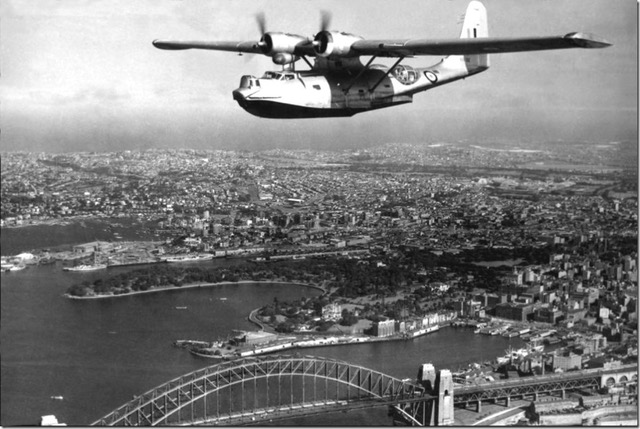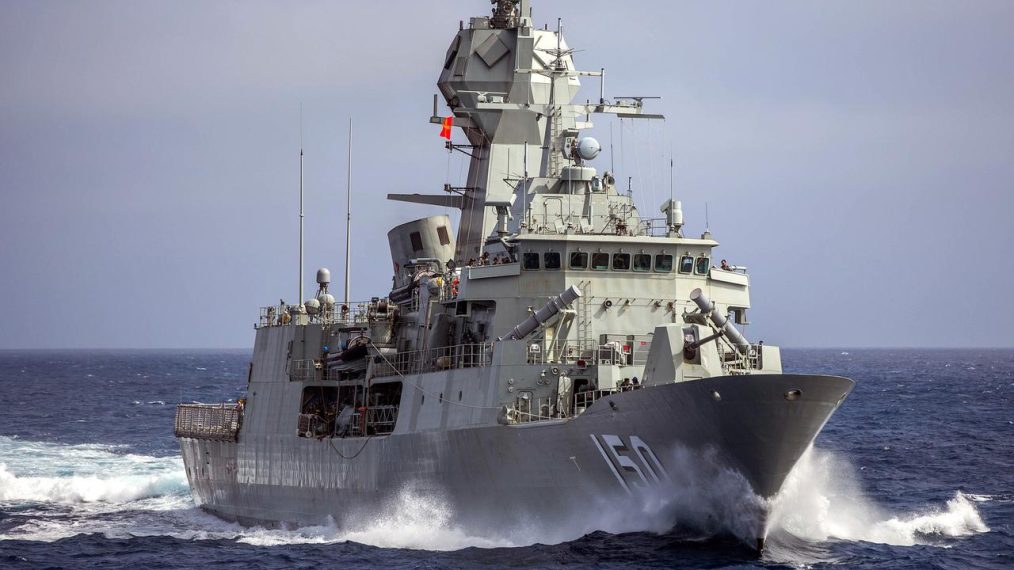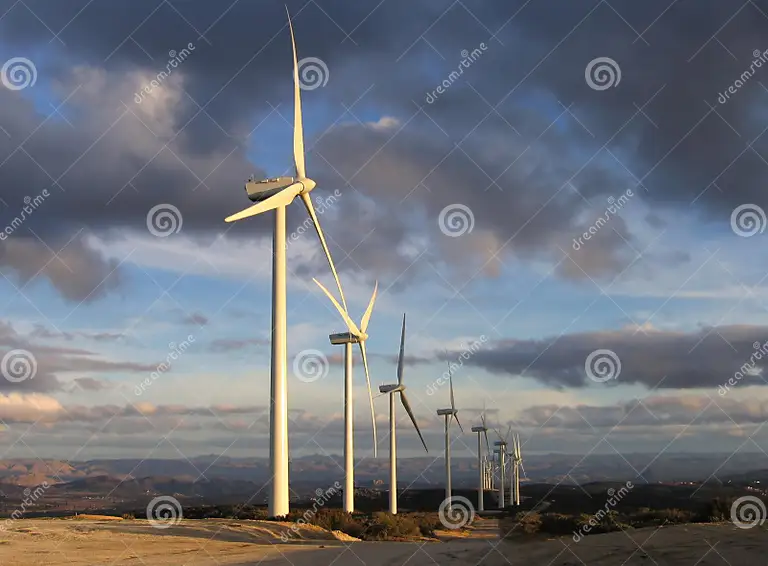 A Shau Valley – near the Việt-Lào border (Thừa Thiên – Huế Province).
A Shau Valley – near the Việt-Lào border (Thừa Thiên – Huế Province).
“A NVA soldier positions a Chinese-made mannequin used to mislead the enemy.
One of the Hồ Chí Minh Trail’s main entry points into the South from southern Làos, the A Shau Valley was the site of some
of the fiercest fighting of the Vietnam War … including Hamburger Hill.” (photographer: Hoàng Kim Đáng)
Regards,
Ernie Chamberlain
ED: I remember cracker night well, at the end of our street was a large paddock for weeks beforehand built a bonfire and on the cracker night the whole street would gather, the fathers supervised, and we all had a wonderful time … great memories even today.
Cracker Night, also known as Bonfire Night or Guy Fawkes Night, was a prominent tradition celebrated on the 5th of November for over 400 years. This historic event commemorates the foiled Gunpowder Plot of 1605, when Guy Fawkes and his co-conspirators attempted to blow up the House of Lords in London. The night is marked by fireworks, bonfires, and the burning of effigies, originally of Guy Fawkes himself.
In its heyday, Cracker Night was an eagerly anticipated event, especially for young boys.
Modern-day Occupational Health and Safety (OH&S) regulations would undoubtedly frown upon the activities that were commonplace during Cracker Night’s peak. By the 1980s, concerns about the injuries from burns and other accidents led to the banning of such celebrations in most states. However, it is worth noting that the hazards of the time were not limited to fireworks; magpies, with their aggressive swooping, were notorious for causing eye injuries during the season.
Despite the inherent risks, Cracker Night was typically overseen by adults. This supervision was crucial in managing the bonfires and ensuring that children handled crackers and rockets as safely as possible. The potential for pain and injury from improper handling taught many youngsters valuable lessons in common sense and caution. They learned quickly when to turn their backs, cover their faces, and run to avoid harm.
Cracker Night holds a significant place in cultural memory, evoking nostalgia for a time when communal festivities and the thrill of a little danger were part and parcel of growing up. While the safety regulations have since curtailed such practices, the stories and memories of Cracker Night continue to be passed down, a testament to its enduring legacy.
Cracker Night was more than just a celebration; it was a rite of passage for many, blending excitement, danger, and valuable life lessons. Although modern safety concerns have largely put an end to such traditions, the spirit of Cracker Night lives on in the stories and memories of those who experienced its thrills and learned from its risks.
In 1951, the RAAF Rathmines flying boat base was the starting point for a notable aviation event involving pilot P.G. Taylor and his aircraft, the PBY Frigate Bird II. Taylor was conducting a test flight for the Jet Assisted Take-Off (JATO) bottles. This technology was crucial for enhancing the take-off performance of aircraft, especially when heavily laden.
In March of that year, Taylor departed from Rose Bay on an ambitious survey flight aimed at scouting a future airline route to South America. His journey was set to conclude in Valparaiso, Chile, with stops at several islands along the way. Notably, his route included Tahiti and Easter Island.
Easter Island Challenges
Landing on Easter Island posed significant challenges, as it required touchdown in the open sea. After fully refuelling, the JATO bottles were essential for the aircraft’s take-off. During this leg of the journey, a sudden storm struck, exacerbating the already difficult conditions. Amidst the chaos, Taylor was washed overboard. Despite this harrowing incident, the crew managed to complete the flight successfully and eventually returned to Sydney.
P.G. Taylor’s Heroic Deeds
Patrick Gordon “Bill” Taylor was already a celebrated aviator by this time, renowned for his bravery and ingenuity. One of his most famous exploits occurred in 1935, during a flight in the Southern Cross, where he demonstrated extraordinary heroism. Halfway to New Zealand, the aircraft’s right-hand engine failed, causing a critical drop in oil pressure in the left-hand engine. Under the command of Captain Charles Kingsford Smith, Taylor performed six perilous trips outside the aircraft. Each time, he carried a thermos full of oil, transferring it from the dead right-hand engine to the functioning left-hand engine, all while precariously standing on the struts of the plane. This act of bravery ensured the crew’s safe return to Sydney on the remaining two engines.
Legacy and Recognition
P.G. Taylor’s extensive flying career spanned both World War I and World War II, marking him as one of the most experienced and daring pilots of his time. Despite his remarkable contributions to aviation, his story remains relatively unknown today. More about his life and achievements can be explored through sources like the Australian Dictionary of Biography.
Upon his successful return from the Chilean expedition, Australian Prime Minister Robert Menzies gifted the Catalina flying boat to Captain P.G. Taylor in recognition of his accomplishments. Today, this historic aircraft is proudly displayed at the Powerhouse Museum in Sydney, serving as a testament to Taylor’s legacy and the pioneering spirit of early aviation.
EU View
In the southeast of Poland, a mysterious blaze erupted at the Mesko weapons factory, resulting in one fatality and another individual injured. The incident has raised numerous questions and concerns given the regional geopolitical climate.
The cause of the fire remains shrouded in mystery. Initial reports suggest that an equipment malfunction could be to blame, but authorities are keeping all possibilities open. The proximity to the ongoing conflict in Ukraine adds a layer of complexity to the investigation, as officials have not ruled out external interference.
Key Details and Context
- Strategic Importance: In 2022, Mesko entered into a significant agreement with Ukraine to supply various calibres of ammunition, underscoring the factory’s critical role in the regional defence industry.
- Coinciding Developments: The fire occurred concurrently with the United States’ launch of an information warfare unit in Poland. This unit aims to counter Russian disinformation campaigns, highlighting the escalating cyber and informational skirmishes in the region.
- Regional Tensions: Europe has been on high alert with multiple incidents of sabotage and disruption attributed to Russian secret services. Although no direct accusations have been made regarding the fire at Mesko, the incident fits a troubling pattern of interference and aggression.
As investigations continue, the true cause of the fire at Mesko remains unknown, with regional authorities and international observers keenly monitoring the situation.
Navy News
Australia has approached shipbuilders from Germany, Japan, South Korea, and Spain to procure general-purpose frigates under Project Sea 3000. On May 24, the government sent requests for information, but further details remain undisclosed due to ongoing evaluations.
A February review titled “Enhanced Lethality Surface Combatant Fleet” recommended replacing eight Anzac-class frigates with 11 new ones, with the first three to be built overseas and the rest in Western Australia. Potential contenders include Germany’s MEKO A-200, Japan’s 30FFM, South Korea’s FFX batches, and Spain’s Alfa 3000.
Shipbuilders have four weeks to respond to the initial request and another three weeks to detail how they can build the frigates in Australia. Selection is expected next year, with the first overseas-built ship commissioning in 2030. The fourth through sixth vessels will be built in Australia, with designs for the remaining frigates still undecided.
By 2026, the Royal Australian Navy will have nine hulls, highlighting a capability gap before new frigates arrive. Rear Adm. Stephen Hughes emphasized using existing designs to expedite the process, despite potential challenges with integrating unfamiliar systems.
Shipbuilders confirmed participation but provided limited details. Hyundai Heavy Industries highlighted its experience and competitiveness in warship building. The Australian Navy will adopt a consistent capability standard across new frigates, despite potential design risks.
ED: Below is a lengthy article by David Pearl, this is my summery of his article.
The article criticises the CSIRO’s latest GenCost report, which claims that wind and solar energy are the cheapest electricity generation technologies, cheaper than nuclear power. The author argues that the report’s reliance on the Levelised Cost of Electricity (LCOE) is flawed, as LCOE measures total costs without considering revenue or profitability. This omission means the report does not provide a complete economic picture, particularly for intermittent renewable energy sources like wind and solar, which only generate power 20-40% of the time.
David Pearl contends that dispatchable power sources (like coal, gas, and nuclear) have a significant commercial advantage because they can meet demand based on market prices, unlike wind and solar, which depend on weather conditions. As a result, wind and solar require substantial government subsidies to remain viable. The article calls for a comprehensive audit of renewable energy costs, including subsidies, system-wide costs, and the economic impact on regional communities. David Pearl argues that such an audit would reveal that the promotion of renewable energy is leading to a significant wealth transfer from low- to high-income Australians, benefiting a select few at the expense of the broader community.
The biggest deliberate transfer of wealth ever seen.
By David Pearl – Spectator
Always be suspicious of an expert report that appears to serve a crude ideological purpose. Always be on the lookout for the big lie dressed up in the language of science.
On May 22, the CSIRO’s latest GenCost report was released. It claimed that large-scale wind and solar are the lowest-cost electricity generation technologies, significantly under-cutting nuclear power alternatives. Chris Bowen was quick to seize on this: ‘Our reliable renewables plan is backed by experts to deliver the lowest cost energy,’ he said, on the day of its release.
Debate on the GenCost report has focused on its treatment of nuclear power. But commentators have missed a fatal flaw in the report’s methodology. Its reliance on a cost metric (the so-called Levelised Cost of Electricity or LCOE) that, by its authors’ own admission, is no ‘substitute’ for ‘more realistic’ ways to analyse electricity generation costs, including cash flow analysis.
Buried on page 64 of the report, this gives the game away. LCOE is an accounting metric, not an economic one. It measures the total unit costs a generator must recover to meet all expenses – plant, equipment, land, raw materials, and labour – including a return on investment. It says nothing about the revenue side of the commercial equation: What prices can the generator earn on the wholesale market and, given their costs, what profits can be earned?
For economists, nothing sensible can be said about a service’s economic value, and therefore economic cost, without this additional information.
Think about it. An unreliable car that costs far less to make than a reliable one could not be said to be ‘cheaper’ than the latter if it has no value for consumers. If, as is almost certain, it could not be sold at a profit, society would be in fact worse (not better) off for devoting capital, land and labour to its production. It is value-subtracting from an economic point of view, not value-adding (unless any external benefits it brings outweigh them).
By the same logic, an inherently unreliable source of power, like solar or wind, cannot be said to be cheaper in an economic sense than a reliable source of power, regardless of how much it costs to supply when the sun is shining and the wind is blowing, which as we know is only 20 to 40 per cent of the time.
To make the same point in a different way. For the 60 to 80 per cent of the time when intermittent power cannot be supplied at any price, its economic cost can be said to be infinite.
As the eminent MIT economist Paul Joskow has pointed out, the LCOE metric ignores the decisive commercial advantage dispatchable power, in whatever form, enjoys over wind and solar generation.
An operator of a coal, gas, and indeed nuclear power facility can gear their operation to meet expected consumer demand as reflected in wholesale market prices. In contrast, for intermittent wind and solar, consumer demand can only ever be satisfied – and profits earned, leaving subsidies to one side – by accident. Literally as a quirk of prevailing weather conditions.
In this respect, wind and solar are more akin to agriculture than manufacturing, liable to suffer from gluts (when it is sunny and all solar capacity is operating), droughts (on cloudy or windless days), and mismatches (when it is windy at times when power demand is minimal). Intermittent revenues, absent guaranteed returns, are inherently unreliable.
When combined with the very high fixed capital costs of renewable projects, this fact explains why wind and solar developers need huge subsidies despite their very low marginal costs. Why, in the absence of this taxpayer support, large-scale wind and solar operators would go out of business.
The GenCost LCOE measure blinds us to this inconvenient truth. It asserts that wind and solar are cheap, but cannot explain the subsidies they need. On this ground alone, it should be rejected. From the public’s perspective – from the point of view of consumers – it obscures and indeed misleads rather than enlightens. A private business using this marketing trick would never get away with it, yet government ministers go uncriticised.
When the Australian economy was collapsing under the economic weight of protectionism in the late 20th Century, the Productivity Commission’s predecessor agencies courageously publicised the economic costs of this policy. At first these reports were ignored, as both the Coalition and Labor politicians proudly boasted of being protectionist (the term didn’t become a pejorative one until the 1970s), but eventually they were taken notice of and influenced policy.
Today, the same critical spotlight should be applied to the costs of wind and solar power, which include: 1. the direct cost of subsidies for them; 2. the system-wide costs – including transmission, storage and back-up dispatchable power – they impose (this would include the cost of subsidies to keep coal-fired power stations operating); 3. the uncompensated economic, social and environmental losses wind, solar, and new transmission lines are inflicting farmers and others living in regional communities (an unprecedented expropriation of property rights); and 4. the welfare costs of a more volatile and less reliable grid (given that additional storage, with current technologies, cannot smooth things over if the renewable share continues to rise).
This renewable energy audit should be embraced by all in the community, regardless of their views on climate change, Net Zero and the merits of nuclear energy. It should be demanded by not only the opposition, but all Labor people who worry about the mounting economic pain being caused by the government’s renewable-only crusade.
Of course, the renewable industrial complex – which reaches deep into the bureaucracy, corporate world, the media and our academic institutions – can be relied on to bitterly oppose such an exercise.
For them at least, this form of sunlight would not be the best form of disinfectant. Rather, it would lay bare the billions of dollars of rents a select few are extracting from the rest of the community, possibly the biggest deliberate transfer of wealth from low to high-income Australians we have ever seen.
Yesterday I posted and article titled POSITIVITY that was sent to me by Mike Kenavan. When I posted his email I wrongly assumed the forword was written by Ken and credited him. Ken has contacted me and advised me that the forword was written by a mate and sent to him.
Sorry Ken
Ray
The ADF’s broad range of trades, roles and responsibilities is reflected in this year’s King’s Birthday military honours list.
The list of 82 high achievers and contributors features everything from intelligence, security and safety experts to capability innovators, strategic advisers, technical staff and special forces instructors.
Among those recognised in the Order of Australia’s military division are Rear Admiral Justin Jones, who has been made an Officer of the Order of Australia (AO) for distinguishing himself in significant senior command roles in the Navy, the ADF Joint Operations Command and Maritime Border Command.
Others to be appointed as AOs in the military division are Major General Matthew Pearse, for his leadership during a period of significant national uncertainty, and Major General Anthony Rawlins, for delivering and maintaining a “capable, agile and potent” joint force.
The 25 appointments and 57 recipients of awards in this year’s honours list are:
OFFICER (AO) IN THE MILITARY DIVISION OF THE ORDER OF AUSTRALIA
Navy: Rear Admiral Justin Jones CSC RAN.
Army: Major General Matthew Pearse AM; Major General Anthony Rawlins DSC AM.
MEMBER (AM) IN THE MILITARY DIVISION OF THE ORDER OF AUSTRALIA
Army: Colonel B; Brigadier Brendan Casey; Brigadier James Davis CSC; Brigadier Duncan Hayward CSC; Brigadier Natasha Ludwig; Brigadier Paul Smith.
Air Force: Air Commodore Veronica Tyler.
MEDAL (OAM) IN THE MILITARY DIVISION OF THE ORDER OF AUSTRALIA
Navy: Chief Petty Officer William Carter; Chief Petty Officer Patricia Kelly; Captain Michael Nipperess RAN; Commander Paul Pelczar RAN; Captain Robin Swift RAN.
Army: Warrant Officer Class One Warrick Butterworth; Lieutenant Colonel Jane Evans; Warrant Officer Class One Cameron Gee; Major Kevin Heyne; Warrant Officer Class One John Lines MG; Warrant Officer Class Two Paul Styles; Warrant Officer Class One Craig Webb.
Air Force: Warrant Officer J; Flight Sergeant M; Wing Commander Matthew Kelly.
CONSPICUOUS SERVICE CROSS (CSC)
Navy: Captain Sean Andrews RAN; Captain Jody Bastian RAN; Captain Benjamin Favelle RAN; Lieutenant Thomas Icke RAN; Captain Glen Miles RAN; Commander Michael Pounder RAN; Captain Christopher Smith RAN; Chief Petty Officer Belinda Wyard.
Army: Colonel L; Lieutenant Colonel S; Major Geoffrey Brennan; Lieutenant Colonel Joel Domigan; Lieutenant Colonel Christopher Gilmore; Lieutenant Colonel Owain Griffiths; Lieutenant Colonel Benjamin Howard; Colonel Scott Jamieson; Lieutenant Colonel Dayton McCarthy; Colonel Richard Niessl; Lieutenant Colonel Leigh Partridge; Brigadier Nicholas Wilson.
Air Force: Flight Lieutenant Jack Devine; Flight Sergeant Ludovico Lico; Group Captain Craig Nielsen; Air Commodore Jarrod Pendlebury; Squadron Leader Brent Purcell; Flight Lieutenant Scott Taylor.
CONSPICUOUS SERVICE MEDAL (CSM)
Navy: Lieutenant Commander Timothy Craig RAN; Petty Officer Stephen Dunlop; Lieutenant Commander Alexander Finnis RAN; Captain Belinda Greenwood RAN; Captain David Hannah RAN; Lieutenant David Loynd RAN; Commander Lauren Milburn RAN; Petty Officer Jim Schacht; Lieutenant Commander William Stow RAN.
Army: Corporal T; Warrant Officer Class Two B; Warrant Officer Class Two C; Warrant Officer Class Two T; Lieutenant Colonel Brian Bearman; Major Timothy Bowers; Warrant Officer Class Two Anthony Campbell; Major Justin Cross; Warrant Officer Class Two Julian Evans; Lieutenant Colonel Steven Frankel CSC; Warrant Officer Class Two Peter Hopkins; Corporal Dylan Neumann; Lieutenant Colonel Geoffrey Price; Major Gregory Sargeant; Warrant Officer Class Two Brenda Smith; Sergeant Leighton Wilson.
Air Force: Corporal J; Squadron Leader Michael Berry; Corporal Andrew Fowler; Squadron Leader Darrin Lindsay; Squadron Leader Lindy Perrett; Squadron Leader Rebecca Trembath.
Multiple students at the Australian National University (ANU) are facing expulsion and police referral over their behaviour at pro-Palestinian encampments. These activists have held protests and set up Gaza solidarity camps since the Israel-Hamas war began on October 7.
Despite Vice-Chancellor Genevieve Bell acknowledging instances of unacceptable behaviour and confirming disciplinary actions against 10 students, only two have been expelled, and five cases remain unresolved. Furthermore, four incidents have been referred to police.
ANU claims to take these matters seriously, emphasizing procedural fairness and support for all students. However, the slow and minimal action taken raises concerns about the university’s commitment to upholding its codes of conduct and ensuring campus safety.
Protesters have demanded ANU divest from companies linked to Israel and cut academic ties. Despite police and campus security ordering the removal of encampments by May 28, some still remain. Offensive stickers and slogans continue to be displayed on campus, with limited efforts to remove them.
This situation highlights a disappointing lack of decisive action by ANU in addressing the ongoing protests and maintaining a safe and respectful campus environment.










